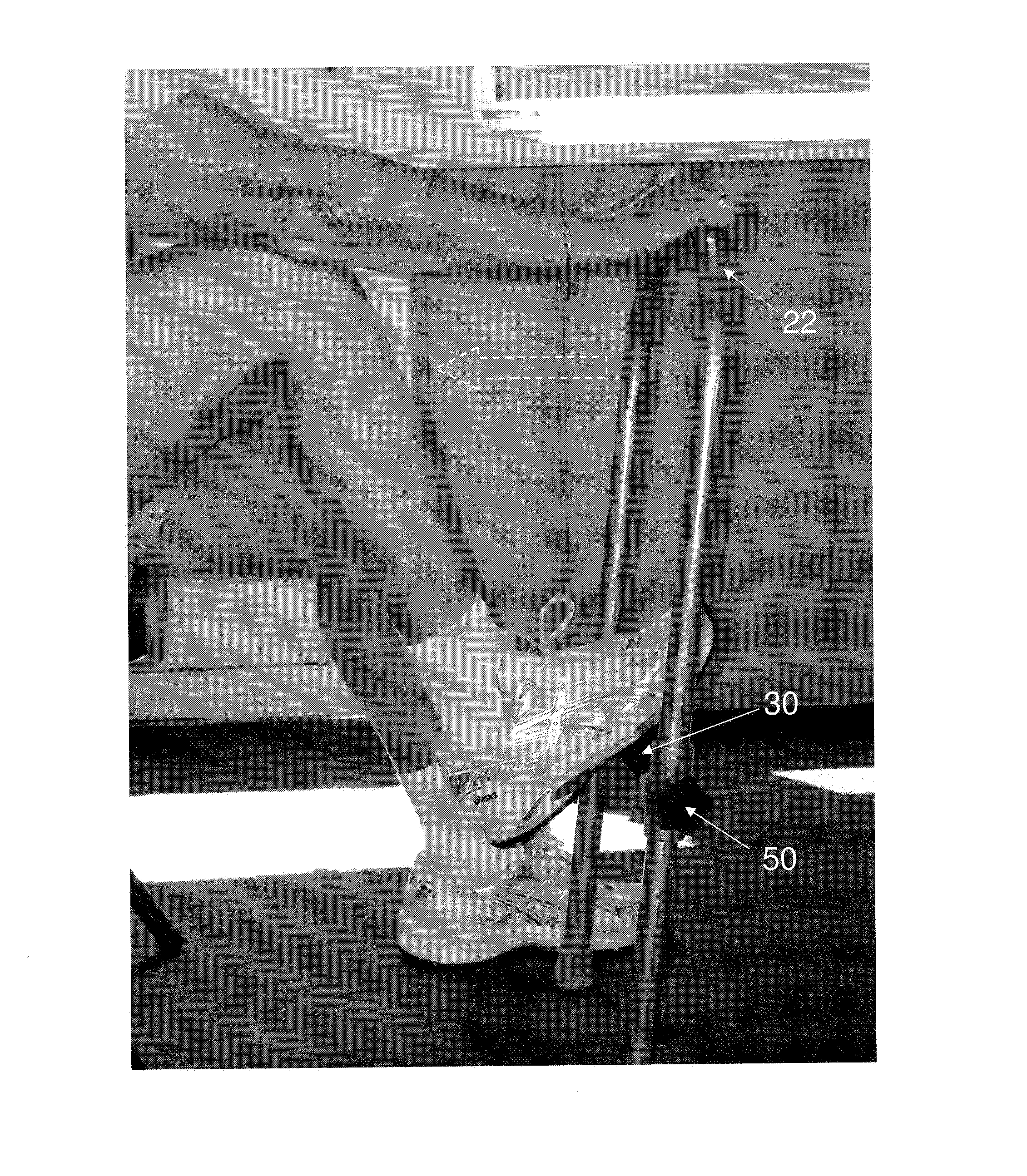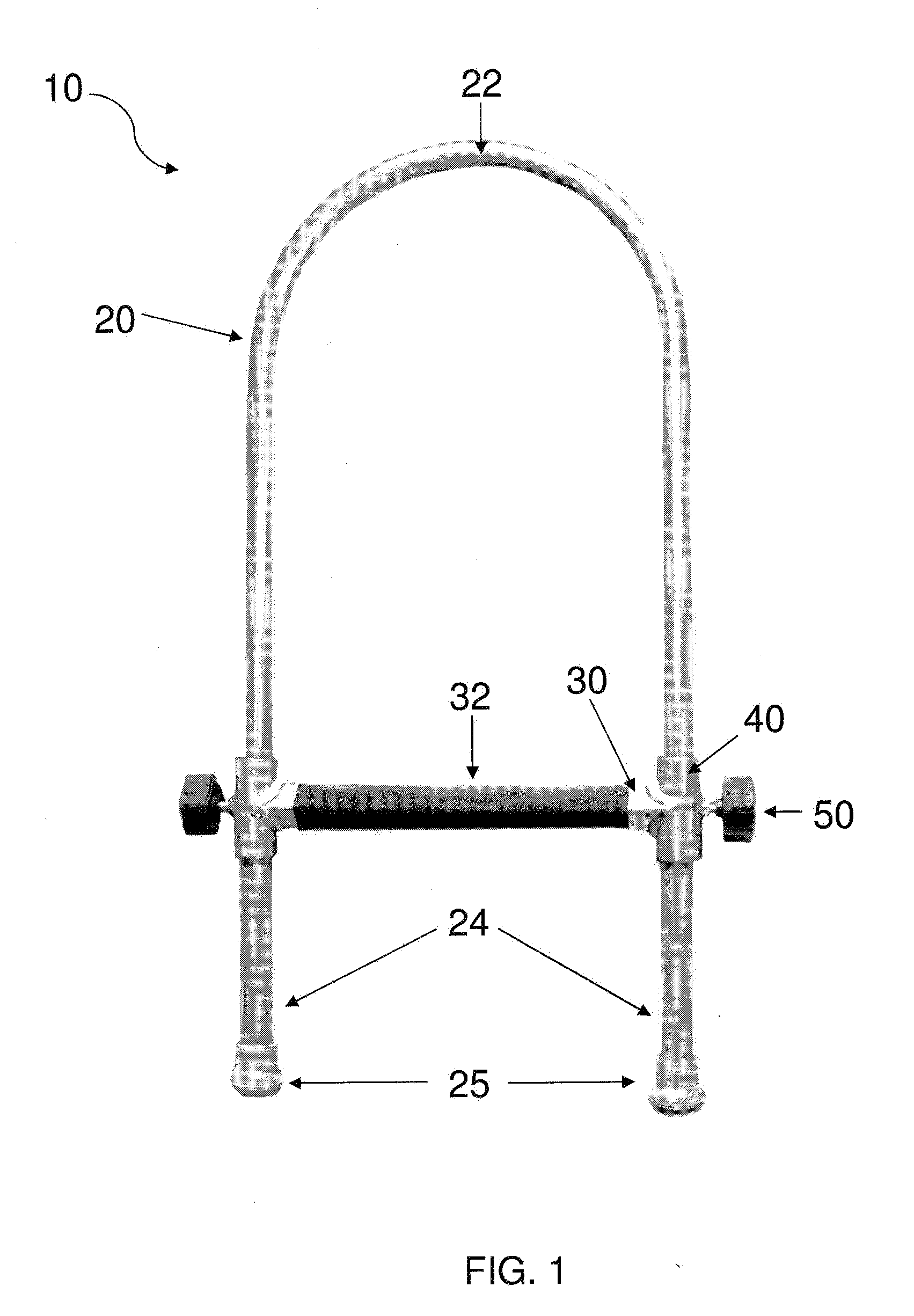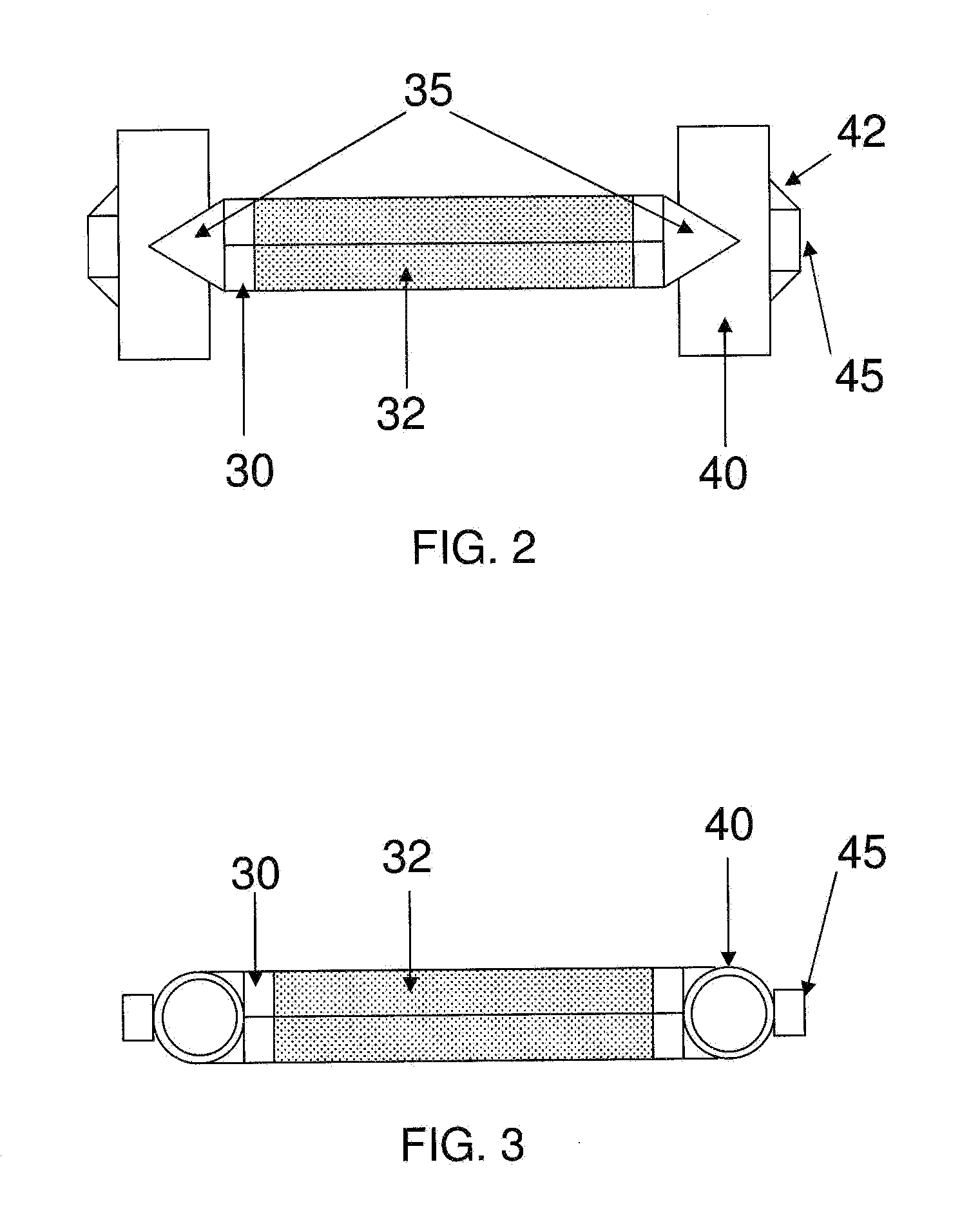Knee exerciser
a knee exerciser and knee technology, applied in the field of knee exercisers, can solve the problems of increasing the difficulty of exercise, increasing the knee angle, reflexively withdrawing users from the motion, etc., and achieves the effects of flexing a joint, reducing pain, and controlling the range and speed of flexing
- Summary
- Abstract
- Description
- Claims
- Application Information
AI Technical Summary
Benefits of technology
Problems solved by technology
Method used
Image
Examples
Embodiment Construction
[0024]At the outset, it should be clearly understood that like reference numerals are intended to identify the same structural elements, portions, or surfaces consistently throughout the several drawing figures, as may be further described or explained by the entire written specification of which this detailed description is an integral part. The drawings are intended to be read together with the specification and are to be construed as a portion of the entire “written description” of this invention as required by 35 U.S.C. §112.
[0025]A knee flexing device of the present invention is shown in FIG. 1. The knee flexing device 10 may include a U-shaped bar 20 having a curved or squared end 22 which may serve as a handle portion and may have two distal ends 24 which may be placed on the floor during use. The U-shaped bar 20 may have a first and a second armed portion which may be connected to a base portion. A cross-member 30 which may be square shaped may be positioned perpendicular to...
PUM
 Login to View More
Login to View More Abstract
Description
Claims
Application Information
 Login to View More
Login to View More - R&D
- Intellectual Property
- Life Sciences
- Materials
- Tech Scout
- Unparalleled Data Quality
- Higher Quality Content
- 60% Fewer Hallucinations
Browse by: Latest US Patents, China's latest patents, Technical Efficacy Thesaurus, Application Domain, Technology Topic, Popular Technical Reports.
© 2025 PatSnap. All rights reserved.Legal|Privacy policy|Modern Slavery Act Transparency Statement|Sitemap|About US| Contact US: help@patsnap.com



